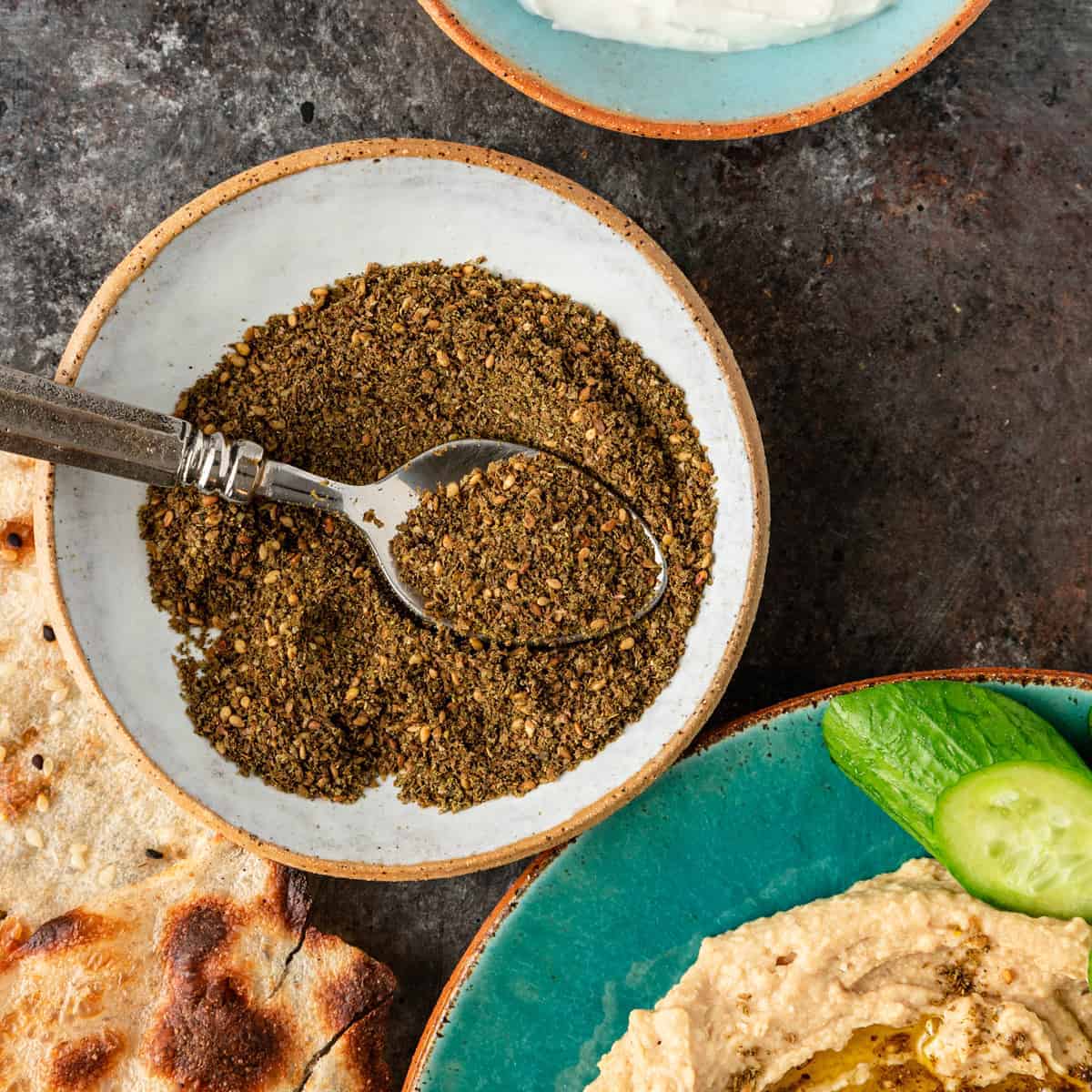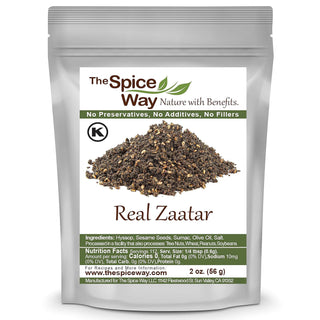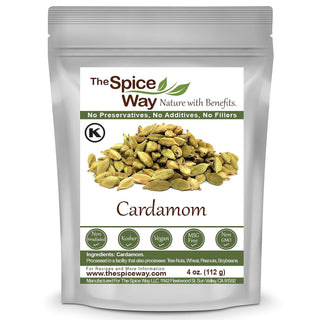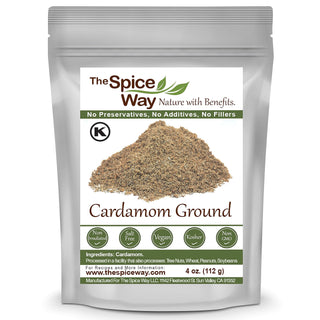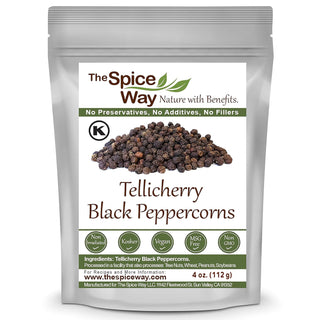Lebanese zaatar is a flavorful and aromatic spice blend with deep cultural and culinary significance in Lebanese and Middle Eastern cuisine. Made primarily from dried thyme, sumac, sesame seeds, and salt, this versatile blend is a staple in Lebanese households, used in everything from traditional breakfasts to modern gourmet dishes.
The Origins of Lebanese Zaatar
Zaatar has been a part of Middle Eastern cuisine for centuries, with historical references dating back to ancient Egypt. However, the Lebanese version of zaatar is renowned for its distinct balance of earthy, tangy, and nutty flavors. "Zaatar" refers to the herb (wild thyme) and the spice blend. In Lebanon, zaatar is deeply rooted in tradition, often associated with health benefits and even folklore, where it is believed to enhance memory and intelligence.
Ingredients of Lebanese Zaatar
The primary ingredients of Lebanese zaatar include:
-
Thyme (Origanum syriacum) – This wild thyme is native to the Middle East. It gives zaatar its signature herbal aroma and earthy taste.
-
Sumac – A reddish-purple spice derived from dried sumac berries adds a citrusy, tangy flavor.
-
Toasted Sesame Seeds – These add a nutty crunch and a rich depth of flavor.
-
Salt – Enhances the overall taste and brings out the flavors of the other ingredients.
Some variations may include spices like oregano, marjoram, or cumin, but the classic Lebanese zaatar remains simple and well-balanced.
How is Lebanese Zaatar Used?
Lebanese zaatar is incredibly versatile and used in many ways:
1. Zaatar Manakish (Traditional Flatbread)
One of the most common ways to enjoy zaatar is as a topping on manakish, a Lebanese flatbread that is spread with a mixture of zaatar and olive oil before being baked. This dish is a breakfast favorite across Lebanon.
2. Dipping with Olive Oil and Bread
A simple and traditional way to enjoy zaatar is by dipping fresh bread into olive oil and then into the zaatar mix, creating a delicious and healthy snack.
3. Salads and Vegetables
Zaatar can be sprinkled over fresh salads grilled vegetables, and even used as a seasoning for roasted potatoes or chickpeas.
4. Meat and Seafood Seasoning
Lebanese zaatar makes an excellent rub for grilled meats, chicken, or fish, adding an aromatic depth of flavor.
5. Cheese and Yogurt Pairings
It pairs beautifully with cheese, such as labneh (strained yogurt), feta, or halloumi, giving them an extra punch of flavor.
Health Benefits of Lebanese Zaatar
Lebanese zaatar is not only delicious but also offers numerous health benefits:
-
Rich in Antioxidants – Sumac is a powerful antioxidant that helps fight inflammation.
-
Boosts Immune System – Thyme is known for its antimicrobial properties.
-
Supports Digestion – Sesame seeds are a great source of fiber and promote healthy digestion.
-
Heart-Healthy – The sesame seeds and olive oil typically consumed with zaatar provide heart-healthy fats.
Where to Buy or How to Make Lebanese Zaatar
Lebanese zaatar is widely available in Middle Eastern grocery stores and online markets. However, making your blend at home ensures the freshest flavors. Here’s a simple recipe:
Homemade Lebanese Zaatar Recipe
Ingredients:
-
3 tablespoons dried thyme
-
2 tablespoons sumac
-
2 tablespoons toasted sesame seeds
-
1 teaspoon sea salt
Instructions:
-
Lightly toast the sesame seeds in a dry pan until golden brown.
-
Combine all ingredients in a bowl and mix well.
-
Store in an airtight container for up to 6 months.
Variations of Lebanese Zaatar
While the classic Lebanese zaatar blend remains a favorite, there are regional and personal variations that add unique twists to the mix. Some of these variations include:
1. Green Zaatar vs. Red Zaatar
-
Green zaatar has a higher concentration of thyme, giving it a more herbal and earthy flavor.
-
Red zaatar contains more sumac, making it tangier and slightly acidic.
2. Adding Extra Herbs
Some families add herbs like oregano, marjoram, or even dried mint to enhance the depth of flavor.
3. Nutty or Spicy Zaatar
-
Some variations include crushed walnuts or almonds for a richer taste.
-
Others add a pinch of chili flakes for a spicy kick.
Cultural Significance of Zaatar in Lebanon
Lebanese zaatar is more than just a spice blend; it carries deep cultural and historical significance. In Lebanon, zaatar is associated with intelligence and alertness, so it is a typical breakfast food for students before exams.
Zaatar in Lebanese Traditions
-
Many Lebanese families have their secret zaatar recipe passed down through generations.
-
It symbolizes hospitality and is often served to guests with bread and olive oil.
-
Lebanese farmers grow wild thyme and harvest it sustainably to ensure the continuation of this beloved tradition.
How to Store and Preserve Zaatar
To maintain the freshness and potency of Lebanese zaatar, follow these storage tips:
-
Use an airtight container – This prevents moisture from affecting the blend.
-
Store in a cool, dark place – Avoid direct sunlight to preserve the flavors.
-
Use within 6 months – While zaatar does not spoil, it gradually loses its aroma.
The Rise of Zaatar in Global Cuisine
Lebanese zaatar is gaining international recognition thanks to the growing appreciation for Middle Eastern flavors. Many chefs worldwide are incorporating zaatar into gourmet dishes, and it has become a sought-after ingredient in health-conscious diets due to its antioxidant properties and nutrient-rich composition.
Where to Buy Authentic Lebanese Zaatar?
For those looking to purchase high-quality Lebanese zaatar, consider these options:
-
Middle Eastern Grocery Stores – Authentic zaatar blends are often found in Lebanese and Middle Eastern supermarkets.
-
Online Specialty Stores – Websites specializing in Middle Eastern spices offer premium, organic zaatar.
-
Local Farmers and Artisanal Blends – Some Lebanese farmers sell hand-harvested zaatar, which ensures authenticity and freshness.
Pairing Zaatar with Different Cuisines
While Lebanese zaatar is deeply rooted in Middle Eastern traditions, its unique flavor makes it a fantastic addition to various international cuisines. Here’s how you can incorporate zaatar into different culinary styles:
1. Mediterranean Cuisine
-
Greek-Inspired Zaatar Salad: For extra flavor, Sprinkle zaatar over Greek salads with feta cheese, olives, and cucumbers.
-
Zaatar Tzatziki Dip: Mix zaatar with Greek yogurt, garlic, cucumber, and lemon juice for a fusion of Mediterranean flavors.
2. Italian Cuisine
-
Zaatar Margherita Pizza: Add a pinch of zaatar to a classic Margherita pizza for a herby, tangy twist.
-
Zaatar Pasta Sauce: To add a fragrant depth, Stir zaatar into a creamy garlic or olive oil-based pasta sauce.
3. Indian Cuisine
-
Zaatar Naan Bread – Brush warm naan with butter and zaatar for an irresistible Middle Eastern-Indian fusion.
-
Zaatar-Spiced Lentil Dal – Add zaatar to a classic Indian dal for a bold and aromatic layer of flavor.
4. Mexican Cuisine
-
Zaatar Guacamole – Mix a small amount of zaatar into fresh guacamole for an earthy, citrusy twist.
-
Zaatar-Spiced Tacos – Use zaatar as a dry rub for grilled chicken or shrimp tacos.
5. Asian Cuisine
-
Zaatar Stir-Fry – Toss zaatar into a vegetable stir-fry for a unique Middle Eastern-Asian fusion dish.
-
Zaatar Sushi Rolls – Sprinkle zaatar over sushi rolls, especially those with avocado or cream cheese fillings.
Final Thoughts:
Lebanese zaatar is a flavor-packed, nutritious, and culturally rich spice blend that can transform your meals. Whether you enjoy it on traditional manakish, sprinkle it on salads, or experiment with international recipes, this versatile ingredient will become a staple in your kitchen.
With its health benefits, deep cultural history, and incredible taste, Lebanese zaatar is a spice blend that everyone should try at least once.
FAQs
1. What does Lebanese zaatar taste like?
Lebanese zaatar has a savory, tangy, and nutty flavor profile. Thyme gives it an earthy and herbal taste, sumac adds a citrusy zing, and toasted sesame seeds provide a mild nuttiness. It creates a rich, aromatic spread perfect for bread, meats, and salads when mixed with olive oil.
2. How is Lebanese zaatar different from other Middle Eastern zaatar blends?
Lebanese zaatar is known for its well-balanced mix of wild thyme, sumac, and sesame seeds, creating a perfect harmony of herbal, tangy, and nutty flavors. While other Middle Eastern countries may include additional spices like cumin or coriander, the Lebanese version retains its traditional ingredients.
3. Is Lebanese zaatar healthy?
Yes! Due to its natural ingredients, Lebanese zaatar is rich in antioxidants, vitamins, and minerals. Thyme supports immune health, sumac has anti-inflammatory properties, and sesame seeds provide heart-healthy fats. It's a nutritious spice blend that enhances both flavor and well-being.
4. How do you use Lebanese zaatar in cooking?
Lebanese zaatar is incredibly versatile—it can be sprinkled on salads, mixed with olive oil as a dip, used as a rub for meats, or baked onto traditional manakish flatbread. It also works well in modern dishes like roasted vegetables, pasta, and popcorn!
5. Where can I buy authentic Lebanese zaatar?
You can find Lebanese zaatar in Middle Eastern grocery stores, online spice shops, or directly from Lebanese markets. For the freshest flavors, you can also make it at home using wild thyme, sumac, sesame seeds, and salt.
